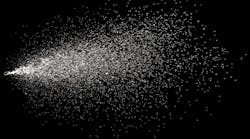Just a few years ago, viral vector manufacturing capacity was scarce — innovators often had to wait 18 to 24 months to gain a CGMP manufacturing spot at gene therapy CDMOs.
Fast-forward to 2024, and gene therapy manufacturing is beginning to see a significant slowdown. Safety concerns, high price tags and regulatory holds, coupled with the emergence of new gene therapy-focused CDMO players, has resulted in excess manufacturing capacity. Consequently, some savvy manufacturers are considering shifting underutilized gene therapy manufacturing capacity to accommodate alternative modalities, such as mRNA.
According to some estimates, the demand for mRNA manufacturing is growing dramatically with no signs of slowing down. In fact, the worldwide mRNA therapeutics market size is expected to reach $38.15 billion by 2030.
What follows in an overview of the facility modifications required to pivot a viral vector manufacturing space into an mRNA/LNP (lipid nanoparticle) manufacturing space.
Considerations regarding ethanol use
One key consideration in converting viral vector facilities to mRNA/LNP is the use of ethanol. As a flammable material, ethanol has implications for ventilation, storage, and electrical safety compliance.
For the purpose of this particular commentary, we’ll assume that the facility will be using an in-vitro transcription (IVT) mRNA process. This requires comparatively fewer facility modifications than an oligonucleotide synthesis reaction.
Even so, adding mRNA and LNP processes to a facility is not without challenges. When both mRNA and LNP processes require ethanol, equipment headspace is often inerted with nitrogen before being used to reduce the risk of ignition. Oxygen monitoring is necessary for the safe use of this nitrogen.
It’s important to note that LNP and ethanol-containing operations are often difficult to manufacture using entirely single-use equipment due to the electrically non-conductive nature of single-use bags. In some cases, a portable clean-in-place skid may be necessary for cleaning stainless steel equipment. Since plant steam is often in limited supply in a viral vector facility, electrical heating elements may need to be used. In other cases, however, a facility’s existing Water for Injection (WFI) drop can be used to clean stainless steel equipment such as the impingement mixing skids often used in LNP formulation.
It's critical, therefore, to evaluate the volumes of ethanol both in use and in storage for processes, to ensure no modifications to the facility are required per the 2021 International Building Code (IBC-2021).
Storage of hazardous materials
IBC-2021 sets maximum allowable quantities (MAQs) of hazardous materials permitted within control areas. These limits depend on whether the substance is being stored, used for closed or open operations. Ethanol is classified as a Flammable Liquid Type 1B. For Flammable Type 1B liquids, permitted volumes per control area are 480 gallons for storage (automatic sprinkler, approved storage cabinets), 240 gallons for in-use closed operations (automatic sprinkler), and 60 gallons for in-use open operations (automatic sprinkler).
For storage of incoming ethanol, a maximum allowable quantity of 480 gallons is permitted for Flammable Type 1B materials in the warehouse. A simple calculation can answer how many months’ worth of incoming ethanol can be accommodated in a given storage facility based on a weekly batch run rate multiplied by the number of gallons required per batch.
Hazardous electrical classification
For this article, we’re assuming that all ethanol processing operations will be closed. That would mean the space in which these manufacturing operations will be performed will be electrically classified as Class I, Division 2, NFPA 30.
To meet code, two approaches can be taken. For maximum flexibility, one approach would be to assume that the entire room, floor to ceiling, will be electrically classified as Class I, Division 2. That means all electrical devices (lighting fixtures, receptacles, fire alarm, door hardware, security, telecommunications outlets, etc.) must be changed to Class I, Division 2 devices, to meet the requirements of the room hazards classifications. This option will allow the end users to locate ethanol-containing equipment anywhere inside the room.
Another option is the electrical classification bubble approach. A Class I Division 2 bubble is measured from ethanol-containing equipment within 5 ft of any edge, extending in all directions; also, up to 3 ft above floor level within 25 ft horizontally from any edge. This is repeated for each piece of ethanol-containing equipment and at each location, overlaying the bubbles. The combined set of bubbles defines the minimum electrical area classification boundary. The resulting boundary will not take up the entire room.
Electrical devices (lighting fixtures, receptacles, fire alarm, door hardware, security, telecommunications outlets, etc.) falling within the electrical area classification boundary must be changed to Class I, Division 2 devices or removed, NEC. The final numbers of electrical devices that need to be modified will be determined based on the exact equipment location.
Facility impacts of electrically classified areas
Typical HVAC approaches used in viral vector manufacturing facilities are well aligned with the needs of mRNA manufacturing. The presence of hazardous/electrically classified areas in the manufacturing rooms drives high ventilation rates and single-pass air, and both are typical of Viral Vector facilities..
Properly defining the extent of electrically classified areas in the space is important to evaluating existing central air handling equipment. If it is determined that the hazardous environment extends into the exhaust ductwork, central exhaust fans will likely need to be replaced to meet the Air Movement and Control Association (AMCA) Spark Resistant Construction specifications. Spark-resistant construction for general exhaust fans would typically not be required in a VV facility.
The International Energy Conservation Code (IECC) requires exhaust energy recovery systems, which can include other electrical devices in the airstream that would need to be addressed. Electrical devices include HVAC control instruments, such as temperature and pressure sensors, and lights inside an energy recovery air handler.
It is also possible to make subtle changes to limit and help control the hazardous environment to minimize required facility upgrades. This approach involves modification of the pressurization scheme and/or airflows. Inward directional airflow can be used to help contain the hazardous environment from escaping a particular room. Pressurization changes must be carefully considered but often will only require rebalancing.
An approach to control the impact of a hazardous environment is to ‘over ventilate’ the space. This approach considers the properties of a spill and uses fresh airflow to dilute an evaporating solvent below 25% of the Lower Explosive Limit (LEL). That calculation could make it clear as to whether an exhaust system would require a Class I, Division 2 electrical classification. Most viral vector facilities are designed to EU Grade C, with single pass airflows of ~25 air changes per hour, which will be adequate in many cases to benefit from over-ventilation.
The requirements for changing over a viral vector manufacturing facility to an mRNA/LNP facility are not inconsequential. They are, however, an important part of being able to pivot when your business requires it. These considerations will help you make that pivot possible.






